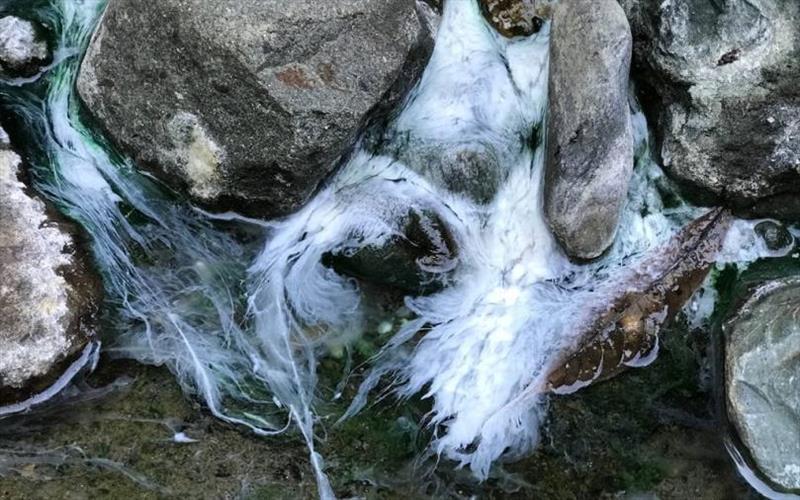
Microbes may act as gatekeepers of earth's deep carbon
by WHOI 28 Apr 2019 20:17 BST

Biofilm in a natural seep in Costa Rica © Peter Barry
Two years ago an international team of scientists visited Costa Rica's subduction zone, where the ocean floor sinks beneath the continent and volcanoes tower above the surface. They wanted to find out if microbes can affect the cycle of carbon moving from Earth's surface into the deep interior. According to their new study in Nature, the answer is affirmativelyyes they can.
This groundbreaking study, published in Nature, shows that microbes consume and crucially help trap a small amount of sinking carbon in this zone. This finding has important implications for understanding Earth's fundamental processes and for revealing how nature can potentially help mitigate climate change.
At a subduction zone there is communication between Earth's surface and interior. Two plates collide and the denser plate sinks, transporting material from the surface into Earth's interior. Showing that the microbes at the near-surface are playing a fundamental role in how carbon and other elements are being locked up into the crust provides a profound new understanding of Earth processes and helps researchers model how Earth's interior may develop over time.
"What we've shown in this study is that in areas that are critically important for putting chemicals back down into the planet these big subduction zones life is sequestering carbon," said Chris Ballentine, Head of the Department of Earth Sciences at the University of Oxford and a co-author of the paper. "On geological timescales life might be controlling the chemicals at the surface and storing elements like carbon in the crust."
This is the first evidence that subterranean life plays a role in removing carbon from subduction zones. It has been well established that microbes are capable of taking carbon dissolved in water and converting it into a mineral within the rocks. The research showed that this happens on the large scale across a subduction zone. It is a natural CO2 sequestration process which can control the availability of carbon on Earth's surface.
"We found that a substantial amount of carbon is being trapped in non-volcanic areas instead of escaping through volcanoes or sinking into Earth's interior," said Peter Barry, WHOI marine chemist and lead author of the paper. Barry carried out the research while at the Department of Earth Sciences, Oxford University.
"Until this point scientists had assumed that life plays little to no role in whether this oceanic carbon is transported all the way into the mantle, but we found that life and chemical processes work together to be the gatekeepers of carbon delivery to the mantle."
During the 12-day expedition, the 25-person group of multi-disciplinary scientists collected water samples from thermal springs throughout Costa Rica. Scientists have long predicted that these thermal waters spit out ancient carbon molecules, subducted millions of years before. By comparing the relative amounts of two different kinds of carbon called isotopes the scientists showed that the predictions were true and that previously unrecognized processes were at work in the crust above the subduction zone, acting to trap large amounts of carbon.
Following their analyses, the scientists estimated that about 94 percent of that carbon transforms into calcite minerals and microbial biomass.
The researchers now plan to investigate other subduction zones to see if this trend is widespread. If these biological and geochemical processes occur worldwide, they would translate to 19 percent less carbon entering the deep mantle than previously estimated.
The research is part of the Deep Carbon Observatory's Biology Meets Subduction project. The interdisciplinary team included 25 researchers from six nations belonging to each of the Deep Carbon Observatory (DCO) Science Communities: Deep Life, Extreme Chemistry and Physics, Reservoirs and Fluxes, and Deep Energy.
Watch this video for a glimpse of the 2017 field campaign, including the final descent into Póas Volcanos active crater. Credit: Deep Carbon Observatory/CoLab Productions